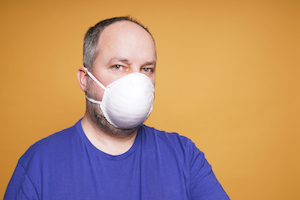 Before you panic-buy masks like there’s literally no tomorrow, you need to read this article. There are lots of myths about wearing of medical masks and FFP face masks and protecting yourself from COVID-19.
Before you panic-buy masks like there’s literally no tomorrow, you need to read this article. There are lots of myths about wearing of medical masks and FFP face masks and protecting yourself from COVID-19.You should always follow the latest guidance – this currently says that if you have symptoms of coronavirus or suspect you could have the virus, you can wear a mask (in the correct way) to limit the spread of your germs.
There is no evidence to suggest that wearing a mask when you have no symptoms will protect you. The exception to this is if you are caring for someone with the infection – a mask is a part of the recommended personal protection equipment (PPE) for doing so.
Using masks correctly
Masks and FFP face masks only serve their purpose if they’re used correctly and disposed of in the right way to avoid cross-infection. Wearing the same mask for days (or even hours) when wet or damaged will reduce its efficiency.
New ones should be stored in a clean, dry place so they do not become contaminated before you even put them on.
Properly inspect a mask before putting it on. There should be no holes, the mask should have a fixed strap/s to keep it held on to your face, and it should be the right size to cover your nose and mouth simultaneously.
When you decide it’s right and go to apply it, make sure it’s the right way up and not inside out. Anything less will not do; the mask will not be effective.
Once you’ve put a mask on, do not touch it unless you are removing it. Should you touch it, it instantly becomes a harbour for infection. This then does more harm than good. Do not keep it hanging the mask under your chin or around your neck either. It needs to be worn to work! It should cover your nose and mouth at all times.
Never share masks, and make sure that you are not using an old mask you’ve used before. Old masks must be disposed of correctly. Do not just leave it on the side where anyone can come along, pick it up and put it on.
Remove the mask by touching the edges, straps, loops, ties or bands only. Do not touch the front portion of the mask, as this may be contaminated. If the mask has ear loops, you can use these to remove it from your face. If there are bands, first bring the bottom band over your head then pull the top band off and remove the mask, holding the top band whilst doing this. If there is a tie, untie the bottom one first then the top and hold the top band to remove it from your face.
The mask should be disposed of correctly and you then wash your hands straight away.
Masks should not be the only measure you take in terms of infection control either: Regularly wash your hands and be aware of any other risks of spreading infection or diseases. Before and after you use one, wash your hands fully and use alcohol hand gel correctly.
Types of mask
FFP masks are available in three main types – 1, 2 and 3. They’re mainly used in industries for protection against airborne particles. The higher the number, the better the protection.
All of them should be CE marked to show that the design has been tested to a recognised standard. They must also be marked with the applicable standard, which for disposable respirators is EN149:2001. Additional markings, such as FFP1, FFP2 or FFP3, indicate the protection level available if the respirator is a good fit and you use it correctly.
FFP3
FFP3 respirators are recommended for use in UK healthcare settings by the Health and Safety Executive, to protect healthcare workers from infectious aerosols. So, with viruses like COVID-19, the FFP3 will give the best level of protection – there is still no guarantee that it will protect you.
As above, you should carry out a pre-use check every time you put on your respirator. Always check that it is fitted according to the manufacturer’s instructions, so ensure that the straps and strip for moulding the respirator around your nose are correctly adjusted. To test the effectiveness, hold the mask in place and breathe in or out sharply. You should readjust the FFP face masks if you detect any leakage around your face or your glasses steam up when you breathe out.
Medical
Medical masks (also known as surgical masks) are mainly used by healthcare professionals but are being used more and more outside of a clinical setting to protect the public from things like the novel coronavirus Covid 19. They can offer protection against the spread of airborne infectious diseases, bodily fluids and particulate matter. During a bad disease outbreak, health departments may recommend that members of the public wear surgical masks to protect both themselves and others.
Most of these masks are white on the side that you place against your face and coloured (often blue) on the side that faces outwards. This makes it easier to put them on correctly!
There are different types of straps to hold them in place: Tie back or elastic straps, that either go over the ears or behind the head. If the mask has ties or straps, secure the top one then the lower one at the base of your skull.
Step by step fitting instruction for an FFP3 respirator(or other FFP face masks).
The masks we demonstrate in our courses are 3M masks but if you use a different brand, you must check the instructions and apply it in the way stated.
These fitting instructions must be followed each time a mask is worn.
1. With reverse side up and using the tabs, separate the top and bottom panels.
2. Pull the chin and nose panel tabs until the nose clip bends so that the respirator forms a cup shape. Ensure that both panels are fully unfolded.
3. Whilst still holding the tabs, hold the respirator with the open side towards your face and bring the respirator to you.
4) When using a VALVED respirator; with one hand, hold the sides of the valve to hold the respirator position on your face, or if you are using an UNVALVED respirator; cup it in one hand with the open side towards your face.
5. Then, with your other hand, take each strap in turn and pull them over your head.
6. Place the upper strap across the crown of the head and the lower strap below the ears. The straps must not be twisted. Adjust the top and bottom panels, using the tabs, for a comfortable fit. Ensure that the panels are not folded and that the tabs are folded flat.
7. Using both hands, mould the nose clip to the shape of the nose to ensure a close fit and a good seal. Pinching the nose clip by using only one hand may result in less effective respirator performance.
8. The seal of the respirator on the face should be rechecked before entering a hazardous area.
To do this, cover the front of the respirator with both hands, being careful not to disturb the fit of the respirator. Then with an UNVALVED respirator, EXHALE sharply or with a VALVED respirator, INHALE sharply. If air leaks around the nose, re-adjust the nose clip to eliminate any leakage and then repeat the check.
If air leaks at the respirator edges, work the straps back along the sides of the head to eliminate the leakage, and then repeat the process.
If you CANNOT achieve a proper fit, DO NOT enter the hazardous area.
To remove the respirator, hold the corners of the respirator on both sides of your face, between your finger and thumb. Lift the respirator away from the face and then upwards, until the headbands come away from your head. As far as possible avoid touching the face-piece with your hands. Dispose of the respirator immediately in a clinical waste bag and DO NOT RE-USE, then wash you hands thoroughly.
Want to know more about Coronavirus COVID 19 and how to use masks and PPE?
We have a free video online Coronavirus Covid 19 course and this includes FFP face masks.

Comments
Pingback: How to avoid catching COVID-19 Coronavirus and free course
Pingback: Using gloves to prevent Coronavirus infection and COVID 19